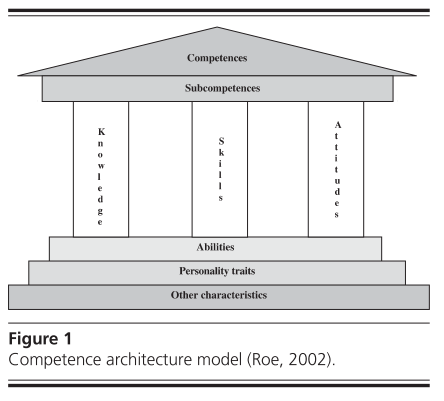It has been 2 weeks, but I’m back with a new blog. In the two weeks I have thought about changing the frequency of blogging to every two weeks instead of every week or so, to make the blogs coincide with my bi-weekly meetings with my supervisors.
First of all the work on differentiating designer roles. Since there is no systematic way to categorise designers in meaningful way, I looked at is from multiple perspectives. Initially I was really enthusiastic about and inspired by both the design expertise model (Lawson and Dorst, 2013) and the categorisation according to function profile (see last post). However, during a meeting with my supervisors I was urged to think further about the applicability of the models in my research.
On one hand, the clustering according to function profiles made sense empirically, but lacked theoretical foundation. On the other hand, the design expertise model works great to explain how designers acquire design expertise by develop certain skills over time, but how would I use it to how product designers acquire circular design expertise? What research techniques could I use to create a similar model to explain how design for circular economy expertise is developed? Observations, interviews, action research? The model proved to have multiple interpretations in the context of my research. Both novice and experienced designers are learning something new when they start working on a circular economy assignment for the frist time. So if the model describes how circular design expertise is acquired, then who would I interview or observe so that I could say something credible about circular design expertise? And where how does this contribute to the main research question (as it stands for now): Which competencies should product designers acquire in the area of circular product design in order to contribute to circular solutions.
A few hours of confusion and a bit frustration followed (did I just waste 2 weeks?!). I reviewed the work that I did and asked myself whether it was “that” important to include a clustering of designers in my research. Couldn’t I instead use the work that I did on clustering of designers in my interviewee selection strategy and data analysis. I assume that designers with a high level of expertise in practice (e.g., expert, master or visionary) are better equipped to foresee which challenges design for a circular economy might post, reflect on their experiences in developing circular solutions and infer which competencies product designers would need. In addition, it would be good to keep in mind how the function profile, caused by the context the product designer operates in, might result in different challenges.
Second of all, I dove into the world of competencies to (1) find out what definitions are floating around in the educational and other domains, and (2) to enrich my knowledge about sustainable and circular competencies. This will help me clarify what I want to get from the interviews, aid in finding empirical foundation for the theoretical framework and help me categorise the interview data in a later stage.
Initial findings of this endeavour are:
In the educational domain, as Wiek et al. (2011, p.204) there is ‘a great deal of terminological ambiguity’ and the domain associates ‘the term ‘‘competencies’’ with skills, abilities, capabilities, capacities, qualifications and other concepts’. Luckily, I also got some suggestions regarding work that is done around inter alia defining “competencies” (e.g., Roe, Mulder, Niishi and Mol). I mainly looked at the work of Roe (2002), who in the psychology domain visualised how competencies are connected to other constructs such as knowledge skills, and abilities (see image) and different ways to extract them.
This strengthened the focus of my research: I aim to create a competency profile for the specialisation of circular product design (within the full domain of product design). It also inspired me to look at other ways of deriving competencies. While I mainly wanted to do interviews with expert designers from practice who are developing circular solutions, the article inspired me to look at other sources such as circular design curricula/courses. Roe (2002) urges to use both an output (e.g., interviews with a designers) and and an input model (i.e., analysing curricular) to come up with a coherent competency profile. HOWEVER (yes in caps), the main concern that I have about this work is that it emerged in another domain. So, in the coming weeks I will read more about the concerns of applying the proposed methodology and its applicability to the design domain.
